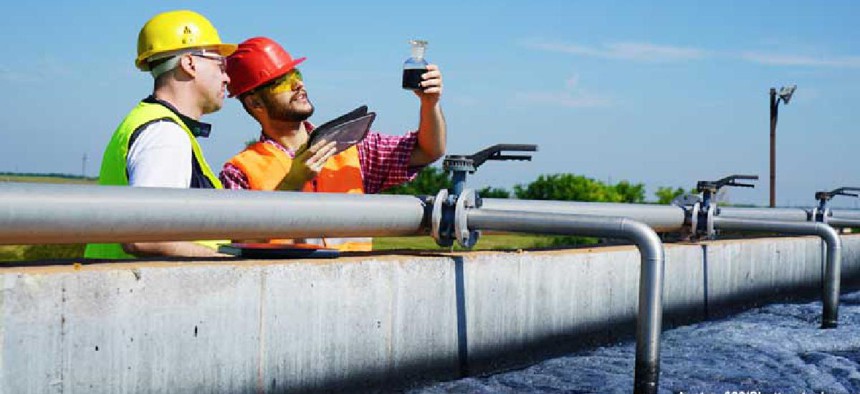HHS gears up for widespread COVID surveillance – through wastewater

The Department of Health and Human Services plans to test wastewater in 42 states for signs of the COVID-19 virus.
The Department of Health and Human Services plans to test for COVID-19 by checking for traces of the virus in wastewater.
Calling it an “early warning system,” wastewater testing can detect COVID-19 cases through SARS-CoV-2 concentrations in sewage five to 11 days earlier than standard clinical testing, HHS said in a Sept. 24 solicitation. The wastewater tests, which are planned for 42 states, would also indicate presence of the virus among asymptomatic carriers or those who don’t get tested.
HHS wants a contractor to detect and track traces of the virus in community wastewater, compile the data, conduct predictive analysis and securely transfer the results into the HHS Protect data portal at least twice a week.
This wide-scale and regular testing of the population via wastewater surveillance will help “guide reopening and mitigation strategies, and also serve as leading indicator for local re-emergence events to enable rapid containment,” the solicitation said.
Within two months, HHS wants testing and reporting on approximately 100 wastewater treatment plants, covering 36 million people or about 10% of the population. HHS then has the option to scale the program up to 320 wastewater plants, testing 30% of the population or approximately 100 million Americans.
In August the Centers for Disease Control and Prevention announced a National Wastewater Surveillance System that would partner with state, local, tribal, and territorial health departments. CDC said the system would provide an efficient pooled community sample, data for communities where timely COVID-19 clinical testing is underutilized or unavailable and data at the sub-county level.
Already, wastewater testing projects have alerted authorities to the presence of COVID-19.
In late August, the University of Arizona was able to stop the spread of the virus after sampling wastewater from several dorms on campus. When initial analysis showed the presence of the virus at one location, the university began testing students at the dorm to identify infected individuals, who were quarantined until they tested negative.
New York state preempted outbreaks on at least three university campuses, according to Dave Larsen, an epidemiologist at Syracuse University. He told CNBC that his program is now running in 14 counties in upstate New York and at 15 institutions, such as college campuses.
Researchers with University of California at Berkeley and their local partners will soon began surveillance for all of the region’s 7 million residents.
“This could provide information on the prevalence of COVID infections in parts of the population where there isn’t a lot of individual testing happening,” Kara Nelson, a professor of civil and environmental engineering at Berkeley, told CNBC, adding that much of the current data on infections is “biased” because of the uneven demand and capability for testing across the country.





